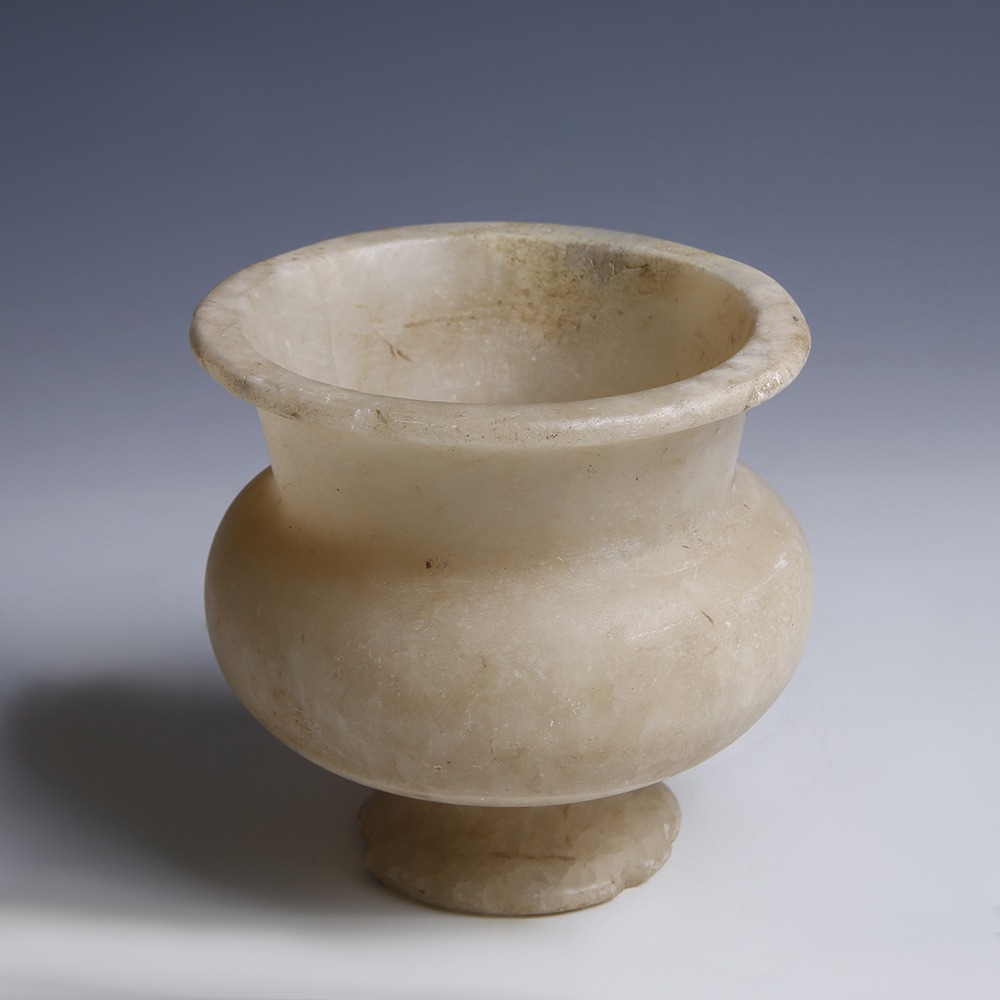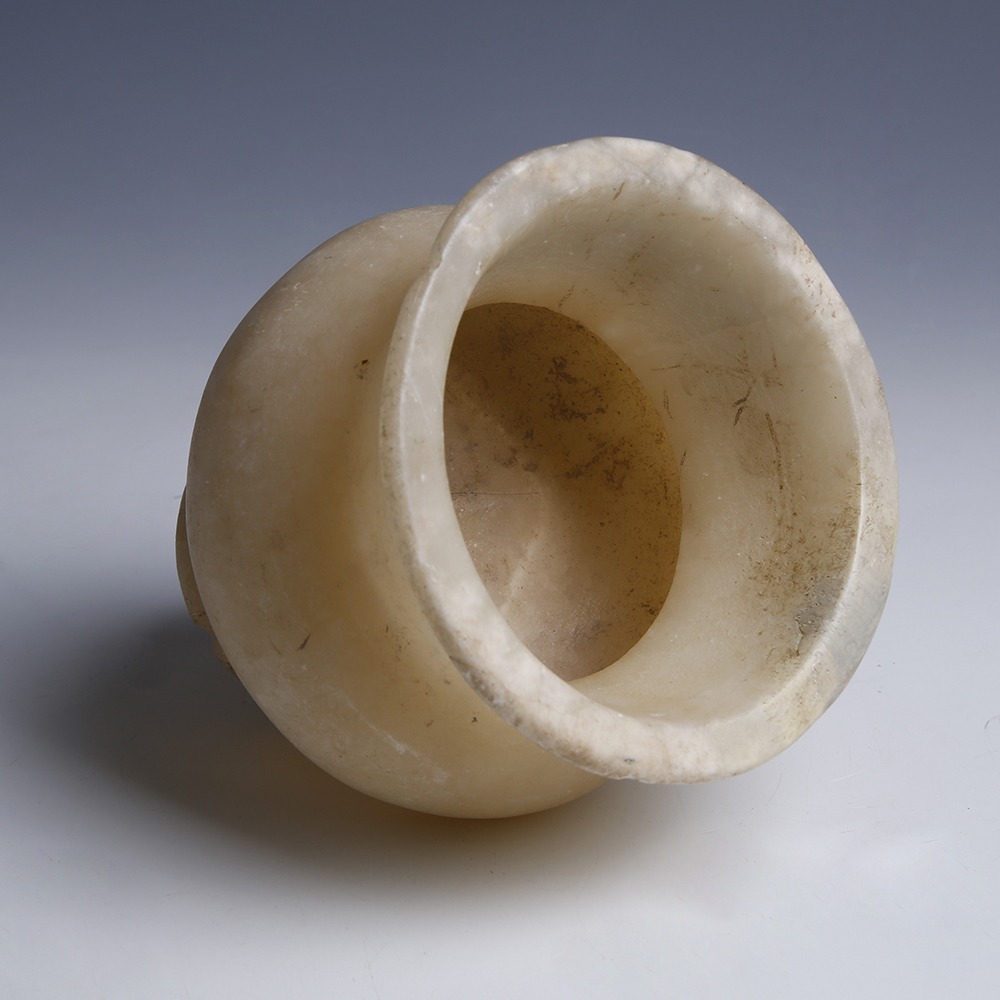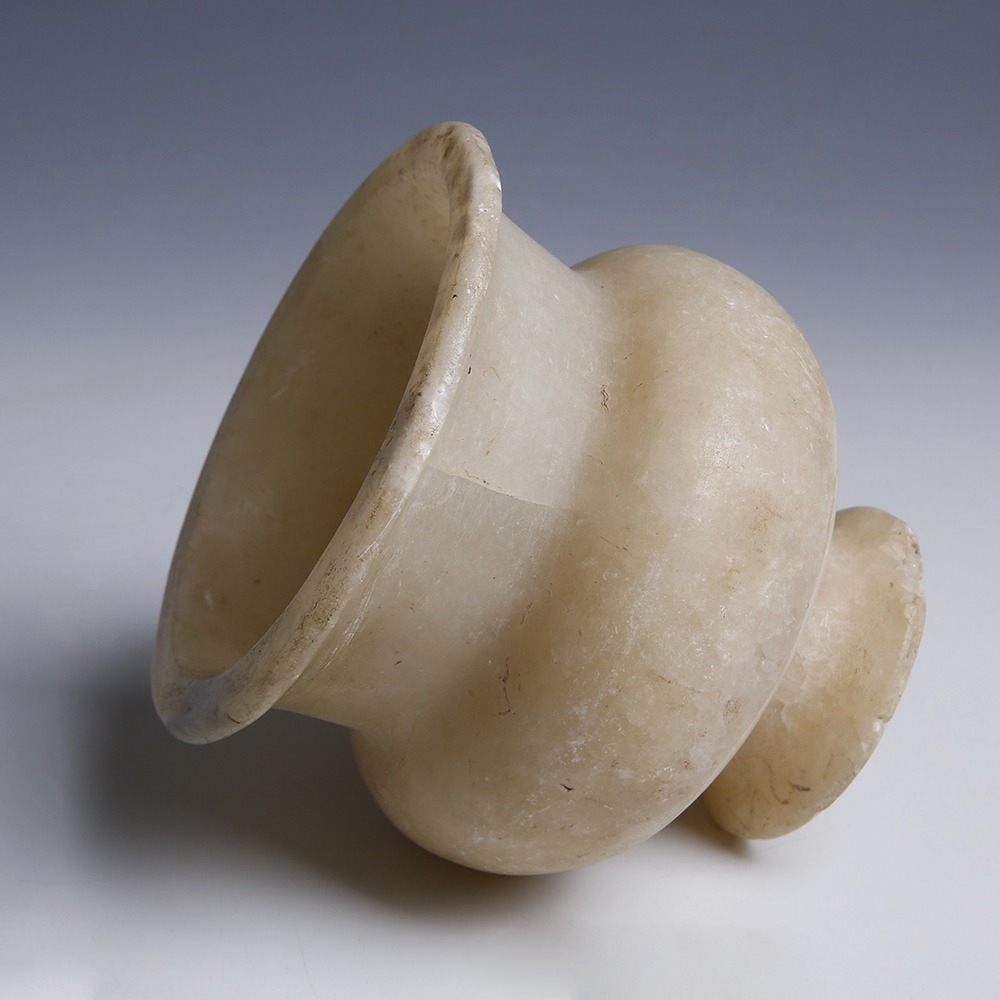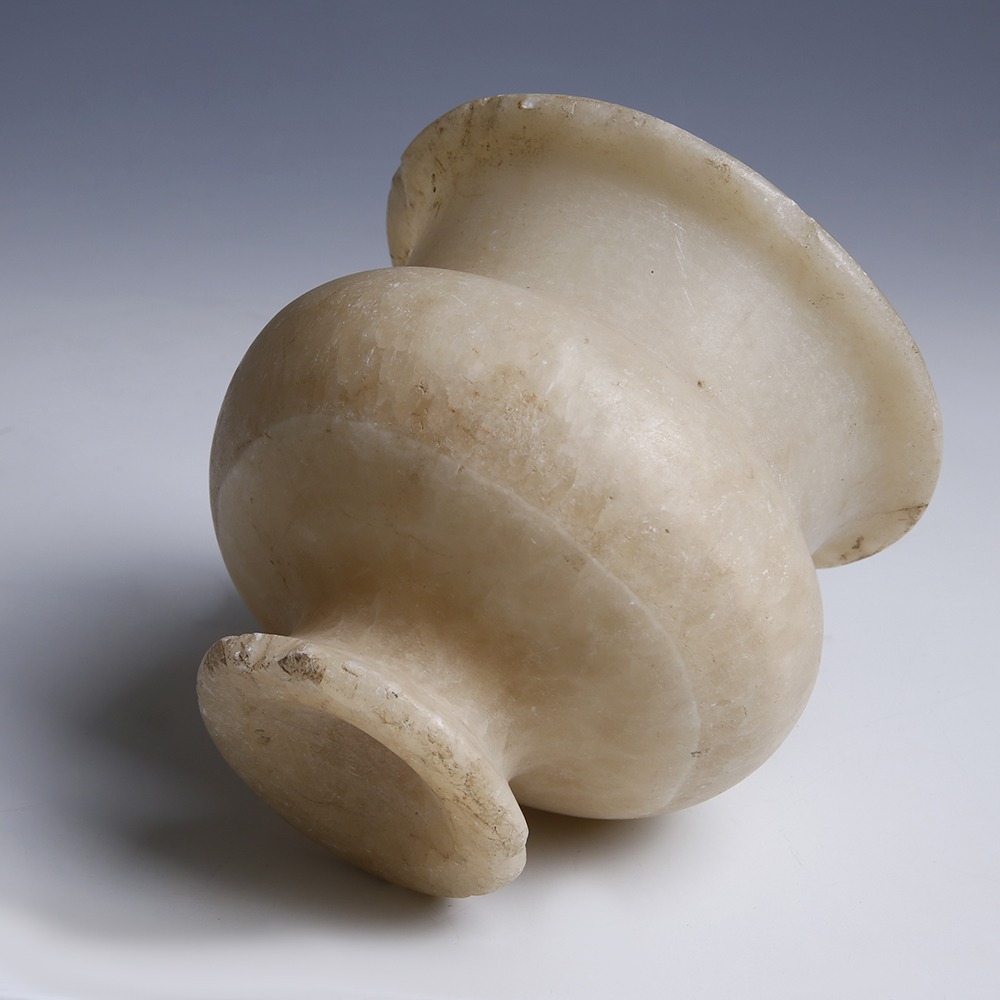Jars of this kind were used to store kohl, before it was applied to the body with a glass rod or reed. Kohl comes from a lead sulphide called “galena”, which was considered to have disinfecting and fly-deterrent properties, and is found frequently prescribed for assorted eye complaints in medical papyri.
The Ancient Egyptians (both men and women) wore kohl on their eyelids as protection against the glare of the sun. In addition to this practical use, outlining the eyes could also have been a way of drawing a protective amulet, such as the Wadjet Eye, right onto the skin. To make kohl, the galena was first ground up on a palette, with water or animal fat then added to create a paste. This paste would have adhered to the skin, with soot also added to produce a darker coloured kohl.



